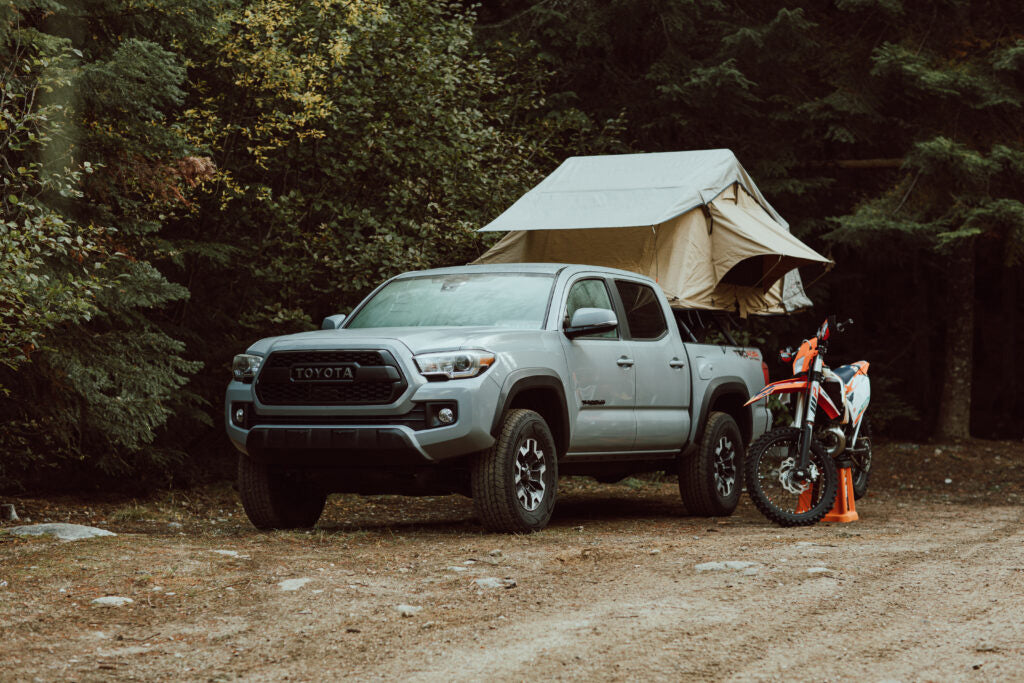
Overlanding 101, Part 1:
Where We’ve Been and Where We’re Going Next
If you’re just getting into offroading, you’ve probably heard a lot about overlanding. If you’ve been in the game a while, you’re definitely aware of it. If you’re aware of it, you’ve probably cracked jokes about the new breed of hipster overlanders. We get it; we’re not exactly innocent. That doesn’t change the fact that overlanding can still be really cool. At its core, overlanding just means you’re relying on your own rig and what you have with you for an adventure, usually for longer than a couple of days. Overlanding is offroading for the adventure of it, not necessarily for the most challenging trails.
History

Overlanding got its start in Australia, where farmers had to move their stock over huge distances, but really, that’s just where the term “overlanding” was first heard. If you hear someone bragging about their “overlanding rig,” it’s a safe bet that guy isn’t a sheep farmer these days.
Once a route for cattle had been established across the roughly 1,000 miles that makes up the route from Kimberely District to the Goldfields, intrepid explorers started to take on the route. Thanks to the work of Alfred Canning in the early 1900s, there was access to water every 15 miles or so, which made the route more useful than ever for working teams crossing the desert.
Building on the popularity of the route, Australian Len Beadell continued to develop the network of rough roads that traversed the Australian outback. Ultimately, his vision led to the development of over 3,500 miles of rough desert roads that opened up over a million and a half acres of desert for exploration. That process went on between 1947 and 1963, and allowed more adventurers than ever to take to the open, albeit rough, roads to explore the country.
At the same time that the routes were being opened across the country, four wheel drive vehicles were finally becoming accessible to the average Australian. Major manufacturers were bringing out new and more capable trucks every year, and motorcycles were simultaneously growing in popularity.
When the 1990s were drawing to close, overlanding was growing ever more popular, with large scale events like the Camel Trophy and the Land Rover G4 challenge drawing in competitors to show off what they were capable of, all while being self reliant on the trails.

In the full spirit of adventure, these races moved around the globe each year, and Land Rover supplied the rigs for each team, outfitted from the factory’s special projects team so that the challenge became more of a test of navigation and driving ability than a test of what the trucks could do.
The global adventure race brought 20 teams from around the planet together to race, adventure, and live the dream from 1980 to 2003, when the race was replaced by the G4 Challenge. The G4 ran through 2008, and unfortunately like so many popular races in the motorsports world were wrecked by the global economic crisis that hit in 2008.
As the economy has recovered, especially here in the United States, overlanding has seen a boom like never before in its history. The newest generation of offroaders seems to have sprung up in the spirit of adventure, with more focus on exploration than on pushing through challenging obstacles.
Thanks to the growth in the activity, the supplies are getting easier and easier to find that make trail bound self reliance easy. Things like rooftop tents and large volume fuel storage are essentially synonymous at this point, and they’re now so available that anyone who is interested in overlanding can afford to get started.
The grown of overlanding has allowed for an entire community to pop up where only niche groups had existed before. While the huge boom we’re living in right now might just be a trend, the sport itself has been around for long enough that you can rest assured it isn’t going anywhere.
Large scale races are certainly a possibility again, but more importantly, overlanding has become a reasonably cost-effective way for would-be young adventurers to take on the world without the expense of hotel rooms and guided tours. In the newest era of “hipster overlanding,” overlanding offers an alternative to the chaos of camera slinging tourism. We get it - we’d rather see the great outdoors, too.
In the rest of the series, we’ll take a look out how you can get the right stuff to make the most of your overlanding adventures, some helpful tips for your first trip, and a list of routes worth exploring that won’t break the bank when you’re just getting started. Stay tuned!
Don’t get out out on the trails without your 10 essentials - not for an afternoon, and definitely not for a long weekend or more. You never know what could happen on the trail, leaving you stuck for longer than you intended. Keep your bases covered, and enjoy the peace of mind knowing that you’re prepared for the best and the worst that could come your way.
If you’re ready to get into overlanding, but you aren’t sure where you should get started to set up your rig for the long haul -- we can help! Give our helpful team of offroading enthusiasts a call, or shoot us an email, and we will get you on the trail as fast as we can, with all the gear that makes sense for you.
